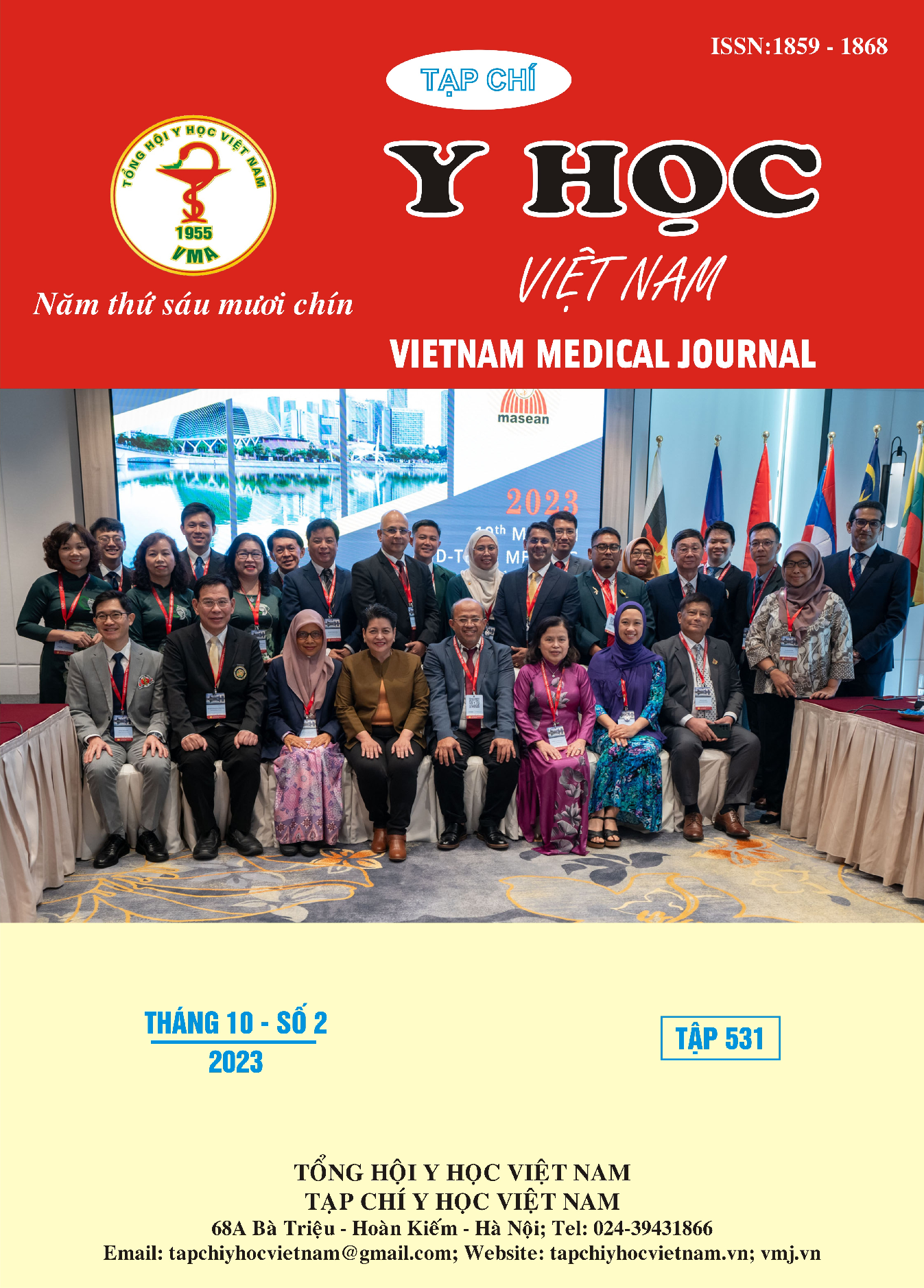PREVALENCE OF SMOKING ADDICTION IN PATIENTS ON ART AT THE DEPARTMENT OF COMMUNITY COUNSELING AND SUPPORT IN DISTRICT 6, HO CHI MINH CITY IN 2023
Main Article Content
Abstract
Introduction: Smoking is very common among people with HIV and alters the immune system, causing dangerous diseases such as cancer, cardiovascular, respiratory, and reproductive diseases. This study was conducted with the goal of determining the prevalence of smoking addiction among patients on ART at the Department of Community Counseling and Support in District 6, HCMC. Objectives: 1) To determine the rate of smoking addiction in patients on ART; 2) To identify the associated factors of smoking addiction among demographic, economic, social, and pathological characteristics. Methods: A cross-sectional study was conducted in 383 patients aged 18 years or older, on ART for over one month at the District 6 Counseling and Supportive department. All eligible participants were recruited by the systematic random sampling method. Results: The rate of smoking addiction was 24% (n = 92), in which the probability was higher in men than women (OR = 2.97, 95% CI = 1.47 – 6.02, p = 0.002). The study found factors relates to smoking addiction including the age group 40–49 years old (OR = 2,39, 95% CI = 1,22 –4,71, p = 0,011); HIV infection ≥ 10 years (OR = 1,9, 95% CI = 1,01 – 3,59, p = 0,047); and alcohol abuse (OR = 2,37, 95% CI = 1,37 – 4,08, p = 0,002). In HIV-infected patients with hepatitis C virus infection and co-morbidity with other opportunistic infections, the prevalence of cigarette smoking was higher (OR = 2,2, CI 95% = 1,29 – 3,75, p = 0,004) and (OR = 1,72, CI 95% = 1,01 – 2,92, p = 0,045). Conclusions - Recommendations: The rate of smoking addiction in patients over 18 years old on ART was 24%, in which men have a higher rate of smoking addiction than women. The prevalence of smoking addiction was higher in the 40–49 age group, HIV infection years ≥ 10 years, alcohol abuse, hepatitis C virus infection, and co-morbidity with opportunistic infections. Recommendations include: 1) Conduct prospective studies to clearly determine the impact of smoking addiction on cancer risk in patients on ART. 2) Promote propaganda and education on tobacco cessation in order to raise awareness of harmful effects and create motivation to quit smoking.
Article Details
Keywords
smoking, ARV therapy
References
2. Mai Thị Huệ. Các yếu tố ảnh hưởng đến tuân thủ điều trị ARV ở bệnh nhân nhiễm HIV/AIDS tại Việt Nam. Tạp chí nghiên cứu và thực hành nhi khoa 2020;1(2).
3. Nguyễn Thu Trang, Đào Thị Minh An, Ngô Văn An, Đỗ Duy Cường. Tỷ lệ trầm cảm và một số yếu tố liên quan ở người nhiễm HIV điều trị tại bệnh viện Bạch Mai năm 2019. Tạp chí truyền nhiễm Việt Nam. 2019; 2(30):100 - 105.
4. Liu X, Baecker A, Wu M, et al. Interaction between tobacco smoking and hepatitis B virus infection on the risk of liver cancer in a Chinese population. International journal of cancer. Apr 15 2018;142(8):1560-1567.
5. A khtar-Khaleel WZ, Cook RL, Shoptaw S, et al. Trends and Predictors of Cigarette Smoking Among HIV Seropositive and Seronegative Men: The Multicenter Aids Cohort Study. AIDS Behav. 2016;20(3):622-632.
6. Helleberg M, Afzal S, Kronborg G, et al. Mortality attributable to smoking among HIV-1-infected individuals: a nationwide, population-based cohort study. Clin Infect Dis. 2013; 56(5):727-734.
7. Nguyen NP, Tran BX, Hwang LY, et al. Prevalence of cigarette smoking and associated factors in a large sample of HIV-positive patients receiving antiretroviral therapy in Vietnam. PLoS One. 2015; 10(2):e0118185. Published 2015 Feb 27.
8. Wojna V, Robles L, Skolasky RL, et al. Associations of cigarette smoking with viral immune and cognitive function in human immunodeficiency virus - seropositive women. J Neurovirol. 2007;13(6):561-568.


